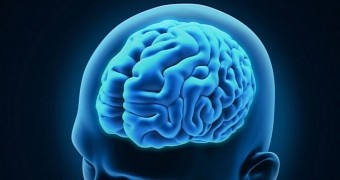In a recent paper, researchers with the Washington University School of Medicine in St. Louis, US, describe the direct conversion of adult human skin cells into fully-functional brain cells.
The study, published in the journal Neuron, brings new hope to people diagnosed with neurodegenerative diseases such as Huntington’s, Parkinson's, and Alzheimer's.
Thus, the scientists behind this investigation argue that, at some point in the not too distant future, their work could pave the way for the development of better treatment options for the aforementioned conditions.
Getting skin cells to turn into neurons
As mentioned, the Washington University School of Medicine scientists experimented with adult human skin cells rather than mouse cells or fairly young human cells, which were the focus of many other previous investigations.
The specialists explain that they settled on using adult human skin cells because, as long as the end goal is to develop new therapies for neurodegenerative diseases, it's important that the possibility is there to use a patient's own cells to treat brain damage.
In their paper in the journal Neuron, they detail that, were doctors to use a patient's own skin cells to treat one neurodegenerative disorder or another, the risk of rejection would be reduced. Besides, the cells needed for such interventions would be easy to come by.
To get the skin cells to become neurons, the scientists placed them in an environment that closely resembled the one that run-off-the-mill brain cells are usually exposed to. In a nutshell, they exposed them to a combination of compounds that compelled them to assume a new identity.
The environment comprised molecules of RNA, which is a chemical cousin of DNA, and other molecules known as transcription factors. The RNA molecules primed the cells to become neurons, and the transcription factors forced them to become specific brain cells, i.e. medium spiny neurons.
As shown by previous investigations, medium spiny neurons play a crucial role when it comes to controlling movement. They are the brain cells that are hit the hardest by Huntington’s disease, a neurodegenerative disorder that causes physical and cognitive decline, and eventually death.
Putting the newly-created brain cells to work
Having engineered these laboratory-made medium spiny neurons with the help of RNA molecules and transcription factors, the researchers transplanted them into the brains of several mice. The rodents all handled the procedure quite well.
What's more, the Washington University School of Medicine specialists say that, six months after the procedure, the neurons grown from adult human skin cells were still alive inside the rodents' brains. Besides, they were behaving similarly to native neurons of the same type.
“Not only did these transplanted cells survive in the mouse brain, they showed functional properties similar to those of native cells,” study senior author and Assistant Professor of developmental biology Andrew S. Yoo said in a statement.
“There cells are known to extend projections into certain brain regions. And we found the human transplanted cells also connected to these distant targets in the mouse brain. That's a landmark point about this paper,” he added.
A new series of experiments
Given the success of this research project, the scientists behind this investigation are now busy trying to use the same technique to grow brain cells from adult skin cells taken from Huntington’s disease patients.
What's more, they say that they are thinking about injecting such lab-made brain cells into rodents engineered to display Huntington’s disease-like symptoms. They expect that, following this intervention, the mice will experience an improvement in their condition.
Admittedly, the chief focus on this study is on developing better treatment options for the physical and cognitive decline that people diagnosed with Huntington’s have no choice but deal with. Still, these researchers' work could help treat other neurodegenerative disorders as well.

 14 DAY TRIAL //
14 DAY TRIAL //